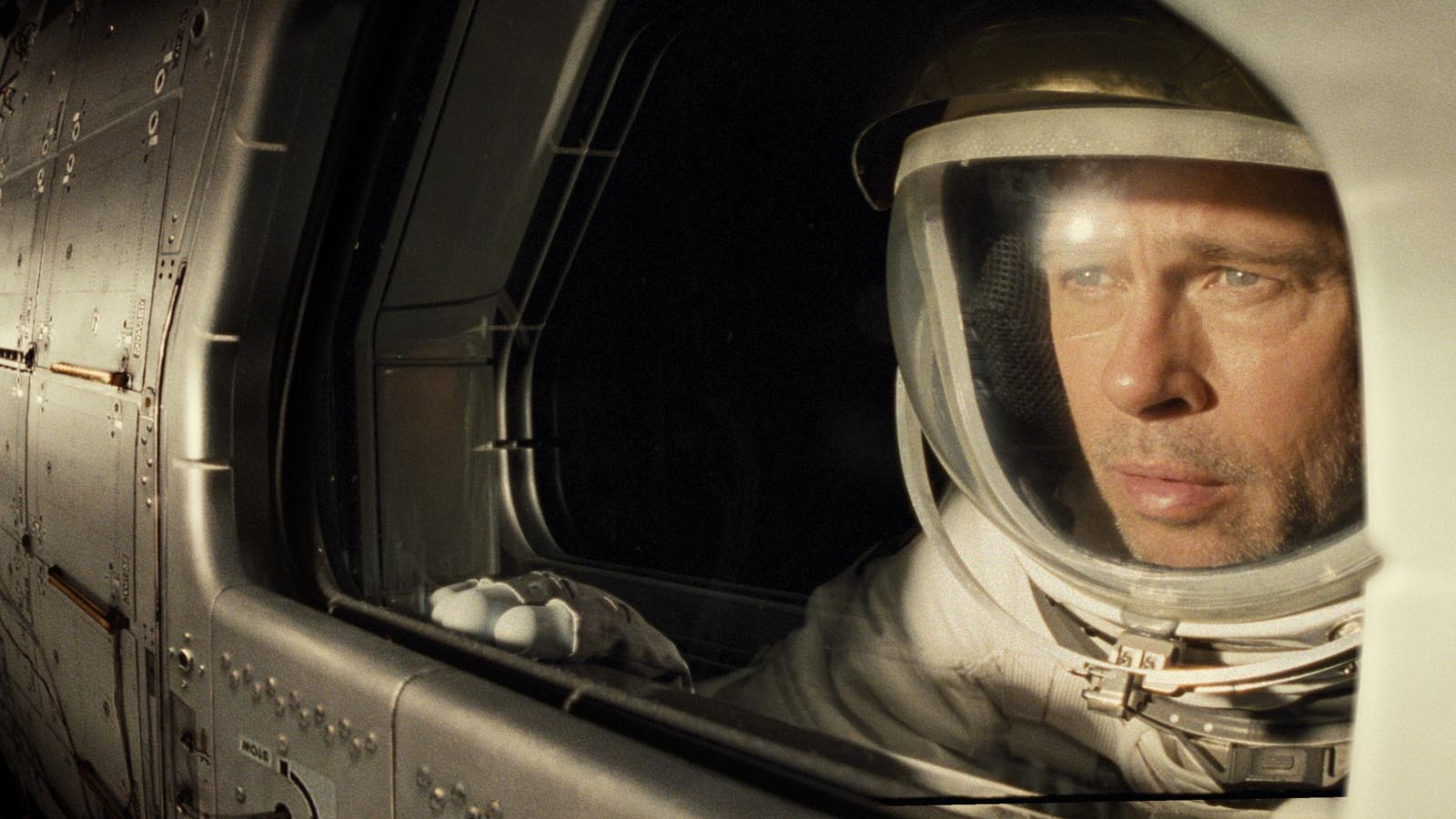James Gray’s Ad Astra

James Gray’s universe is expanding. In 1994, when he was all of twenty-five, he launched his debut feature, Little Odessa, at the Venice Film Festival, where it won a Silver Lion. His next two features, The Yards (2000) and We Own the Night (2007), also focused on New York families entangled in relentless cycles of murder and corruption. The Immigrant (2013), set in the 1920s, was his first period drama, and in The Lost City of Z (2016), an explorer treks back and forth between London and the Brazilian jungle over the course of the first few decades of the twentieth century. Ad Astra, premiering in competition in Venice and opening in theaters on September 20, opens in the not too distant future at the outer edge of Earth’s atmosphere before taking off for the moon, then Mars, and ultimately, Neptune.
Somewhere on that distant planet, Clifford McBride (Tommy Lee Jones) may be up to something that’s setting off electrical storms that threaten the entire solar system. Government officials decide to send McBride’s son Roy (Brad Pitt), an astronaut with a preternatural ability to maintain a steady pulse in the direst of emergencies, on a top-secret mission to reunite with his long-lost father and get him to cut it out.
Even critics who have drawn comparisons between Ad Astra and Stanley Kubrick’s 2001: A Space Odyssey (1968) and Francis Ford Coppola’s Apocalypse Now (1979) are quick to point out that this is still very much a film by James Gray. IndieWire’s David Ehrlich notes that “the more expansive its vision gets, the more inward-looking its focus becomes. Even with a linear narrative that never slows down, a chase sequence that feels like Fury Road on the moon, and a suspenseful vision of the galaxy that makes room for any number of unexpected surprises (beware the claw marks inside a seemingly abandoned spaceship), Ad Astra is still one of the most ruminative, withdrawn, and curiously optimistic space odysseys this side of Solaris. It’s also one of the best.”
In a similar vein, the Los Angeles Times’ Justin Chang observes that as the story progresses, narrated by Roy “in thick streams of voice-over that suggest a Zen philosopher by way of a film-noir private eye,” it “becomes increasingly elastic in its play with genre, shape-shifting into an action movie, a paranoid thriller and, finally, an earnest hybrid of cosmic parable and male weepie. Gray’s command of these tonal and narrative shifts is evidence of a sensibility steeped in classical cinematic entertainments, and grounded in the belief that even a meditative, quasi-Tarkovskian space opera should deliver a good jolt every now and then.”
Writing for Sight & Sound, Jessica Kiang finds “a consistent, voluptuous elegance to the filmmaking here that surpasses anything Gray, never an inelegant director, has achieved before.” At the same time, though, the “gracefulness of the craft throws into relief the clumsiness of the dialogue, and the silkiness of the sensorial experience sits tonally at odds with the sometimes deranged side quests and adventures into which this otherwise very serious-minded film occasionally, alarmingly diverts.” She’s not alone. For every rave, there’s an admiring but qualified review. “It’s huge,” writes Rory O’Connor at the Film Stage. “It’s personal. It’s sometimes stunning. And it is, ultimately, just satisfactory.”
For the most part, praise for Gray’s collaborators goes unqualified. “The indispensable Donald Sutherland delivers a beautiful mix of dire warning and rue as a retired colleague of Clifford’s, and Ruth Negga is all steely, grief-fueled determination as a Mars native with a connection to [Clifford’s] doomed Lima Project,” writes Sheri Linden in the Hollywood Reporter. As Roy’s estranged wife, Liv Tyler “has little chance to make an impression but manages to do so nonetheless, in part because Gray has a knack for conveying backstory with a well-deployed shorthand of expressionistic flashback images.” And then there’s Max Richter’s otherworldly score and Kevin Thompson's production design, “which has a lived-in, unshowy emphasis on practical, rather than digital, artistry.”
For many, the MVP here is Brad Pitt, who “seems to be growing more weathered, and more beautiful, with each role,” as Stephanie Zacharek puts it for Time. Gray and cinematographer Hoyte Van Hoytema, who shot Christopher Nolan’s Interstellar (2014), “make the most of that beauty, bringing the camera in close to survey his cheekbone contours, his haunted-lake eyes, the vegetation of his blondish beard whiskers, as if they were mapping the geography of a new planet. He survives the scrutiny.” In the Guardian, Xan Brooks finds that Pitt “embodies McBride with a series of deft gestures and a minimum of fuss. His performance is so understated it hardly looks like acting at all.”
That approach is crucial to Gray’s vision, argues the Telegraph’s Robbie Collin. “Emotionally,” he writes, “the film operates in a classic Gray area, with barely perceptible eddies that build to a mighty existential wrench. All of which, it should be said, rests on Pitt’s shoulders—which feel like very different shoulders, somehow, to the ones that slouched so appealingly through Once Upon a Time . . . in Hollywood. His performance here is as grippingly inward and tamped down as his work for Tarantino was witty and expansive—it’s true movie stardom, and it fills a star-system-sized canvas.”



